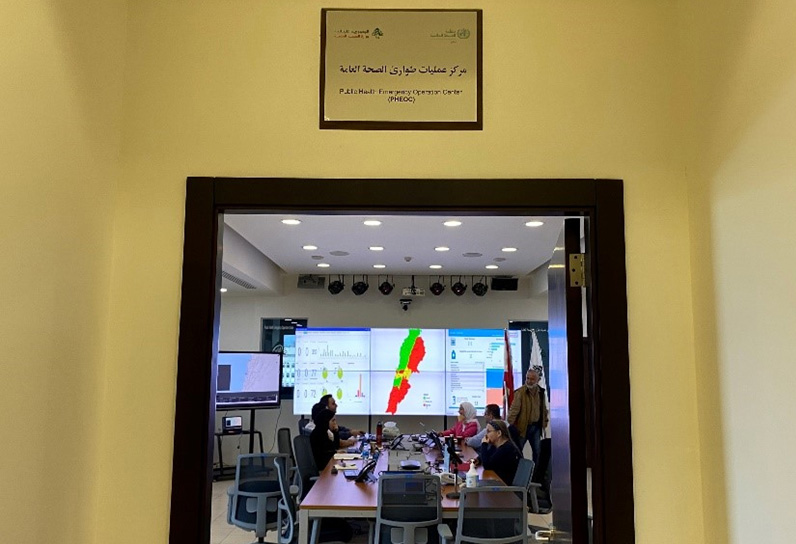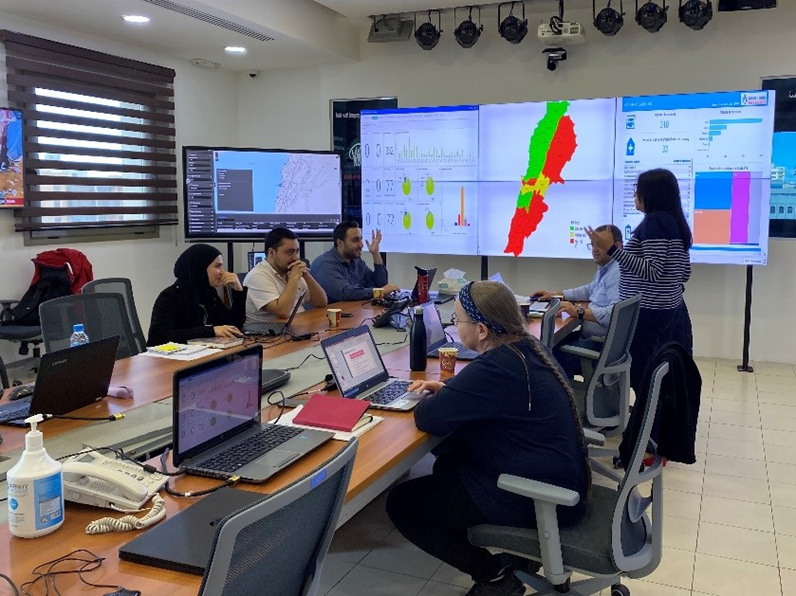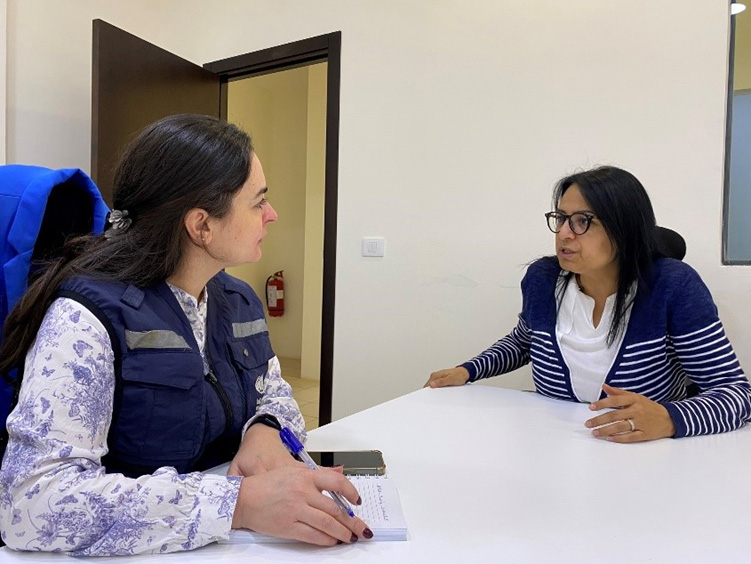 The updated PHEOC, a joint venture by the Ministry of Public Health and WHO, is located on the Ministry’s premises. Photo credit: WHO/WHO Lebanon
The updated PHEOC, a joint venture by the Ministry of Public Health and WHO, is located on the Ministry’s premises. Photo credit: WHO/WHO Lebanon
19 December 2023, Beirut, Lebanon – Lebanon is no stranger to emergencies. The country has known war and, in recent years, has had to contend with the COVID-19 pandemic, the Beirut port blast and a crippling economic crisis. Now, conflict has hit the south of the country, and there is a risk it may spread north.
Such emergencies lead to casualties and forced displacement, directly affecting the health sector. There are indirect impacts too: access to health services gets harder, and infectious disease outbreaks become more likely.
In 2022, WHO worked with the Ministry of Public Health to revitalize the Lebanon’s public health emergency operations centre (PHEOC). It is from this hub that the country’s health response is coordinated and led in times of crisis. The PHEOC was relocated from Rafik Hariri University Hospital to a new site in the Ministry of Public Health, close to the Minister’s office.
With funds from the United States of America, WHO renovated the premises and equipped it with state-of-the-art data and connectivity tools. The centre has a reception, a conference room and 3 offices, plus a server room and kitchen. WHO has provided screens on which to display key indicators for decision-making, interactive maps of health facilities, and the news.
The centre can continue to function during power cuts, thanks to its independent electricity supply. Radio links mean that communication with teams on the ground, if needed, is assured.
“In the heat of an emergency, an effective response relies on structures already in place,” said Dr Abdinasir Abubakar, WHO Representative in Lebanon. “I thank the United States for its generous support to this project. As we face cross-border hostilities in Lebanon today, the PHEOC is providing a coordinating platform for health readiness and response.”
 Ministry staff and partners at work in the PHEOC, focusing on health readiness and response to the current cross-border conflict. Photo credit: WHO/WHO Lebanon
Ministry staff and partners at work in the PHEOC, focusing on health readiness and response to the current cross-border conflict. Photo credit: WHO/WHO Lebanon
Responding to health emergencies is complex both in terms of the various groups and the range of tasks involved.
 Ms Myriam Sassine of WHO and PHEOC manager Ms Wahida Ghalayini discuss the current emergency response. Photo credit: WHO/WHO Lebanon
Ms Myriam Sassine of WHO and PHEOC manager Ms Wahida Ghalayini discuss the current emergency response. Photo credit: WHO/WHO Lebanon
PHEOC manager Ms Wahida Ghalayini highlighted the positive impact of the revamp: “Before the PHEOC update, the response was fragmented. With this new space, we’ve brought together Ministry staff, public and private sectors, WHO, the International Committee of the Red Cross, Médecins Sans Frontières, the Lebanese Red Cross and others under the same roof for an effective and cohesive response. This has been a game-changer.”
Experts in public health, clinical management, laboratory analysis, pharmaceuticals, data, logistics, communications and more work together in the PHEOC to quickly and efficiently coordinate a response. All these strands of work are coordinated by an incident manager, who also provides strategic direction. Together, they make the PHEOC the beating heart of the country’s health emergency response.







